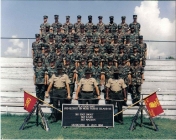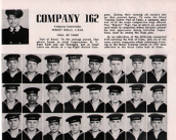Specialty Summary. Manages and performs activities within fixed ground, mobile and airborne command and control (C2) facilities such as installation and expeditionary command posts (CP), operations centers, rescue coordination centers, and Combatant Command and Major Command (COCOM/MAJCOM) command centers. Provides command, control, communications, and information support throughout the full spectrum of operations to include peacetime, emergency and disaster situations, crisis, contingency and war. Receives and relays C2 instructions and records; collects, processes, and submits manual and automated data products.
Disseminates time-sensitive critical information to senior leaders and support agencies. Establishes procedures for operational reports, readiness reports, and the Status of Resources and Training System (SORTS) report. Reports international treaty compliance information. Uses communications systems and consoles to affect positive control of assigned forces and weapons systems. Supports chemical, biological, radiological, nuclear, and explosive (CBRNE), and conventional warning and reporting activities. Ensures compliance with operations center and CP policies and procedures. Related DoD Occupational Subgroup: 125000.
Duties and Responsibilities: Performs C2 actions to support Homeland Security, National Defense, and Air Force operations. Provides C2 of worldwide nuclear and conventional forces supporting Emergency Plans, Operations Orders, and Operations Plans. Facilitates C2 in support of the Installation Emergency Management (EM) Program. Coordinates actions to ensure prompt response during EM operations including immediate mobilization of resources and participation of agencies and organizations. Receives, processes, and disseminates emergency action messages via voice and record copy systems. Encodes, decodes, and transmits and relays presidential decisions to execute and terminate nuclear and conventional force operations. Relays C2 instructions for diversion, recall, evacuation, recovery, and reconstitution of forces. Coordinates and executes search and rescue activities. Coordinates with other agencies and organizations during planning, executing, and evaluation phases of CP operations. Initiates, receives, and takes action on alert messages. Flight-follows and manages aerospace resources and monitors mission status to include aircraft, aircrew support, transportation, maintenance support, fleet services, and passenger and cargo support. Monitors aircraft movement and relays information to and from aircrews. Coordinates mission delays with installation and external agencies. Monitors status of launch and space assets. Monitors status and location of key personnel, such as group commanders and above, to facilitate immediate communications with higher headquarters when necessary. Ensures proper use and control of resources and classified material. Develops and evaluates CP processes. Performs self-inspections. Ensures operational readiness and adherence to standards. Recommends actions to correct CP procedural deficiencies. Maintains and disseminates local and worldwide current and forecasted weather to include watches, advisories and warnings to installation populace and aerospace resources. Ensures existing directives for executing and controlling assigned forces are understood and properly applied.
Prepares and submits operational, readiness, SORTS, international treaty, and aerospace asset reports. Analyzes and disseminates information derived from operational and readiness reports. Establishes procedures for operational, readiness and SORTS reporting to include developing procedures, maintaining databases, training personnel, and conducting staff assistance visits. Ensures reported data is current and accurate.
Operates and monitors voice, data, and alerting systems. Develops operating instructions directing CP and lateral agency C2 activities. Develops, maintains, and initiates quick reaction checklists supporting situations such as suspected or actual sabotage, nuclear incidents, natural disasters, aircraft accidents or incidents, evacuations, dispersal, and aerospace anomalies. Receives and disseminates time-critical information to and from the commander to internal and external agencies during daily operation, natural disasters and wartime and contingency operations to affect positive control of assigned forces and weapons systems. Coordinates actions to ensure prompt response during disaster operations (pre, trans, and post), including immediate activation and recall of all resources and participating agencies and organizations. Monitors actions to preserve life, minimize damage, and restore operations following natural disasters (trans and post), accidents, wartime attacks, and military operations other than war. Coordinates, directs, and monitors actions to allow continuation or restoration of vital functions and operations. Maintains operational status displays. Maintains proficiency in C2 systems and aircraft flight following and mission management systems such as Theater Battle Management Core Systems (TBMCS) and Global Decision Support System - 2 (GDSS2). Establishes manpower, communications, equipment, and facility requirements.
Maintains Communications Security (COMSEC) to include receiving, safeguarding, utilizing, inventorying, issuing and destroying COMSEC material. Maintains CP personnel, information, operations, computer, emission, industrial and physical security programs.
Performs administrative actions. Compiles and maintains entry authority list. Coordinates and provides input to installation support plans. Maintains directives and daily events log.
Specialty Qualifications:
Knowledge. Knowledge is mandatory of: Air Force organization and administration; EM the National Incident Management System (NIMS) and Air Force Incident Management System (AFIMS); C2 data systems and reporting; automated data processing equipment use, capabilities, and limitations; techniques of presenting data; data collection procedures and summary techniques; purpose of command post for preparing, executing, and controlling assigned forces; emergency actions and directives; command weapon systems movement and transfer procedures; encode, decode; and authorization procedures used by command of assignment.
Education. For entry into this specialty, completion of high school or General Education Development (GED) equivalency, with courses in oral communications and computer operations is desirable.
Training. For award of the AFSC 1C331, completion of the CP Apprentice Course is mandatory.
Experience. The following experience is mandatory for award of the AFSC indicated:
1C351. Qualification in and possession of AFSC 1C331. Also, experience in functions such as handling automated operational data, controlling input and output data from automated CP systems using data processing devices, and communication operations.
1C371. Qualification in and possession of AFSC 1C351. Also, experience performing or supervising functions of CP operations.
1C391. Qualification in and possession of AFSC 1C371. Also, experience managing and directing CP functions.
Other. For entry into this specialty: Normal color vision as defined in AFI 48-123, Medical Examinations and Standards.
See attachment 4 for additional entry requirements. For entry, award, and retention of these AFSCs: Continued demonstration of mental and emotional stability. Ability to speak English clearly and distinctly as demonstrated by Reading Aloud Test administered in accordance with AF Pamphlet 48-133, Physical Examination Techniques. Must be able to type. Specialty requires routine access to Top Secret material or similar environment. For award and retention of AFSCs 1C3XX, completion of a current Single Scope Background Investigation (SSBI) according to AFI 31-501, Personnel Security Program Management. NOTE: Award of the 3-skill level without a completed SSBI is authorized provided an interim Top Secret clearance has been granted according to AFI 31-501.




